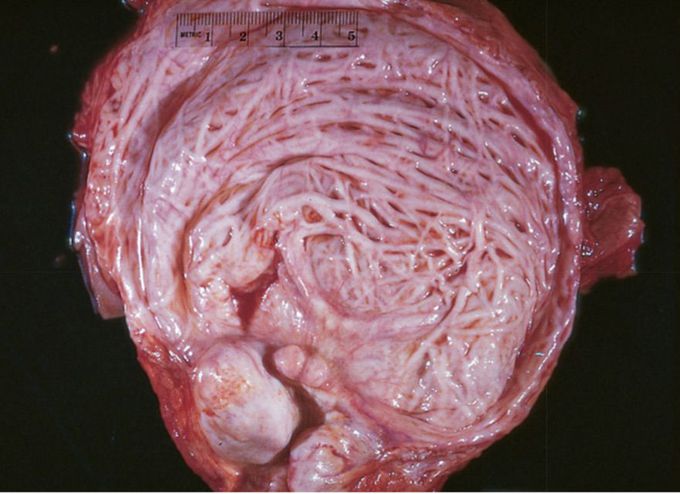

Bladder
A 78-year-old man has had increasing difficulties with urination for the past 6 years. He has difficulty starting and stopping the urine stream. On physical examination, his temperature is 37° C and blood pressure is 130/85 mm Hg. The figure shows the representative gross appearance of the bladder. Which of the following laboratory findings is most likely to be reported in this patient? A. Positive antinuclear antibody test B. Hemoglobin concentration of 22.5 g/dL C. Prostate-specific antigen level of 5 ng/mL D. Schistosoma haematobium eggs in urine E. Positive skin test for Mycobacterium tuberculosis . . #usmle #usmlestep1 #BPH Bladder hypertrophy can result from outlet obstruction. In an older man, this type of obstruction is most often caused by prostatic enlargement caused by hyperplasia or carcinoma. Mild elevations in the prostate-specific antigen (PSA) level may occur in patients with prostatic hyperplasia, and greater increases in PSA suggest carcinoma. Autoimmune conditions may be associated with interstitial cystitis, but cystitis does not cause bladder neck obstruction. Polycythemia can be the result of a paraneoplastic syndrome, but urothelial malignancies are unlikely to produce this finding; renal cell carcinoma is a more likely cause. Schistosomiasis leads to chronic inflammation and scarring. Bladder outlet obstruction can increase the risk of infection, typically with bacterial organisms such as Escherichia coli, not Mycobacterium tuberculosis.

